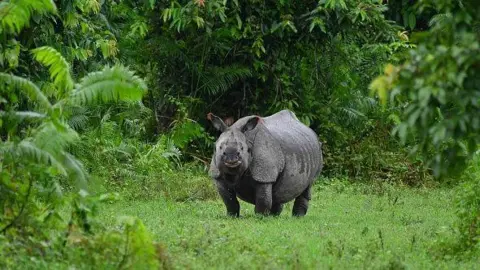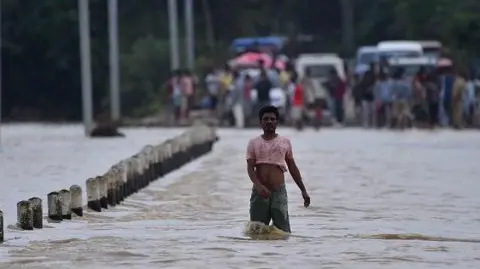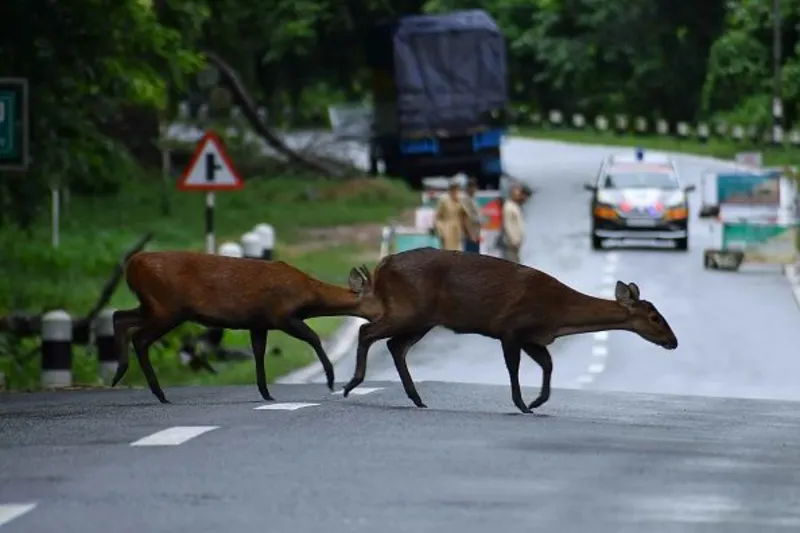
More than 130 wild creatures, including six endangered rhinos, were killed in Assam’s recent disastrous floods. This natural calamity has resulted in substantial harm to the region’s wildlife, with numerous animals drowning. The park, which is famous for its big population of one-horned rhinos, is presently experiencing its worst flooding in years.
Significant Impact on Wildlife – 117 hog deer, two sambar deer, a rhesus monkey, and an otter were among the wildlife killed by the floodwaters.
- In 2017, the park lost around 350 animals due to flooding and car incidents during migration. This year’s floods have also displaced almost two million people in Assam.
Conservation Efforts – 97 animals being rescued from rainfall, with 25 receiving medical focus and 52 released following treatment.

- Kaziranga National Park also acts as a tiger reserve and is home to elephants, wild water buffalo, many kinds of bird species, and endangered South Asian dolphins.
The floods in Assam brought about more than 60 deaths and major damage to infrastructure, crops, and cattle, causing a humanitarian crisis. With the possibility of further rain coming, relief camps have been built to house those who have fled.
Environmental Concerns – Floods and landslide are common during rainfall season in northeastern India and closest countries. Brahmaputra’s river levels are going rising further, affecting the existing situation.

The severe loss of animals and shifting of human populations underline the region’s essential need for long-term conservation policies and calamity organizing.
Floods in India’s Kaziranga National Park have killed over 130 animals, including six rhinos. Discover the influence on biodiversity and regional conservation initiatives.


